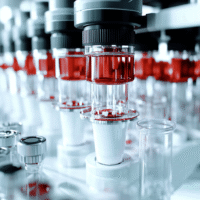Understanding the Study on Probiotics and Omega-3 for Type 2 Diabetes
This research looked at how well a combination of probiotics and omega-3 fatty acids works for people with type 2 diabetes (T2D). The goal was to see if this combination could help improve the function of insulin-producing cells in the pancreas.
What the Study Found
Here are the main points from the study:
- Probiotics: These are good bacteria that can improve gut health. The study used a mix of different probiotics.
- Omega-3 Fatty Acids: These are healthy fats found in fish oil that can support overall health.
- Results:
- The combination of probiotics and omega-3s showed a slight improvement in the pancreas’s insulin-producing cells.
- However, when compared to a placebo (a treatment that does nothing), the difference was not strong enough to be considered significant.
What Does This Mean for Patients and Clinics?
The findings suggest that while probiotics and omega-3s may help slightly, they are not a guaranteed solution for improving pancreatic function in T2D. However, patients did show some improvements in blood sugar levels and other health markers.
Real-World Applications
Here are some ways clinics can use these findings:
- Offer probiotics and omega-3 supplements as part of a comprehensive treatment plan for T2D.
- Monitor patients for any improvements in blood sugar control and overall health.
What to Track in Clinics
Clinics should keep an eye on the following:
- Blood sugar levels
- Weight and body measurements
- Insulin sensitivity
- Inflammation markers like TNF-α
Suggested AI Tools
Consider using AI tools for:
- Tracking patient progress over time
- Identifying patterns in blood sugar levels and treatment effectiveness
Step-by-Step Plan to Apply Findings
Clinics can start implementing these findings by following this plan:
- Start Small: Begin by offering probiotics and omega-3s to a small group of patients.
- Monitor Results: Track their health improvements over a few months.
- Adjust Treatment: Based on results, decide whether to expand the program.
- Educate Patients: Share information about the potential benefits of these supplements for managing T2D.
For more details on this research, visit this study link.




























